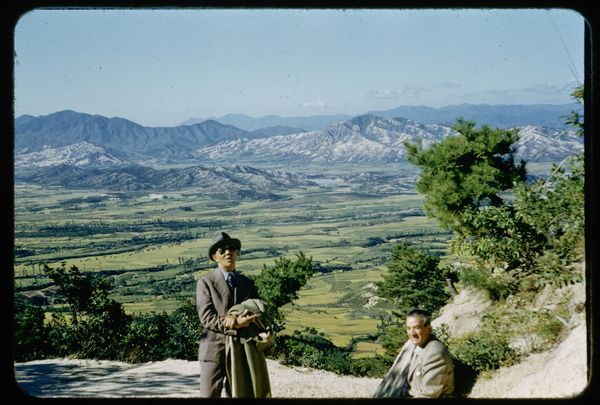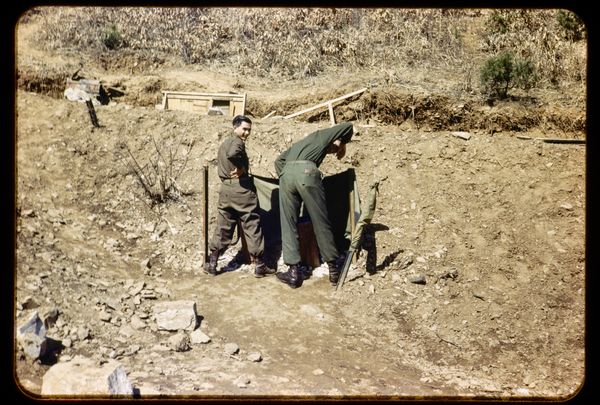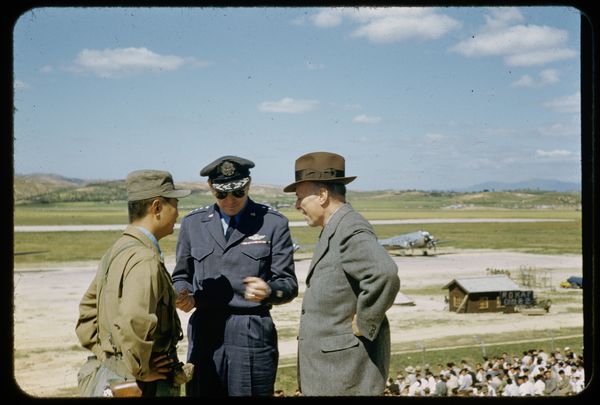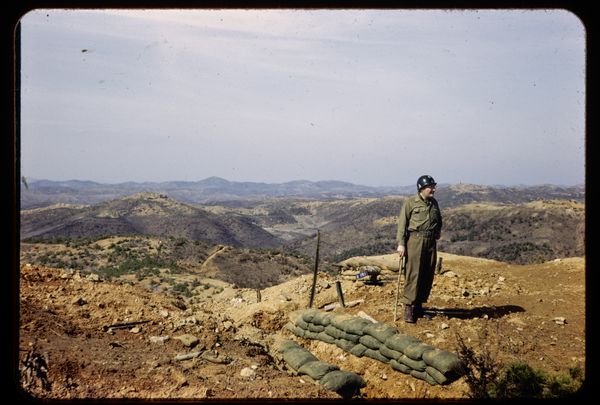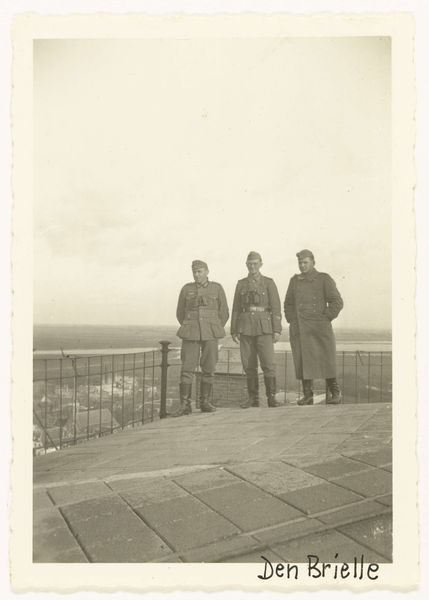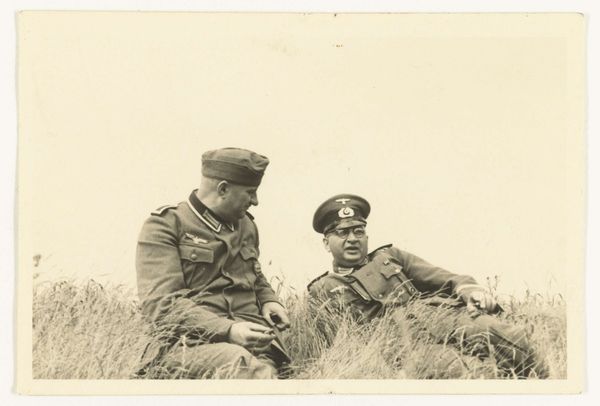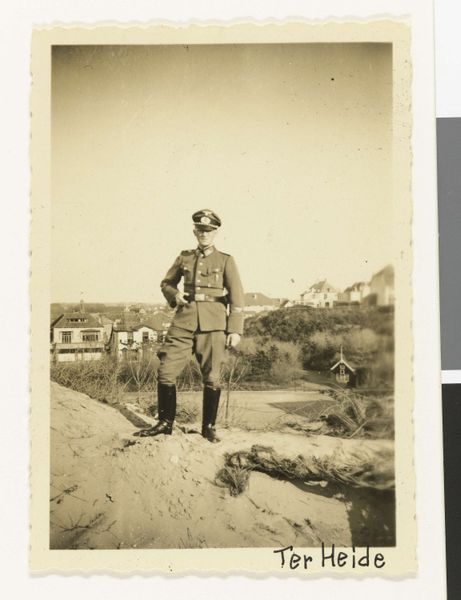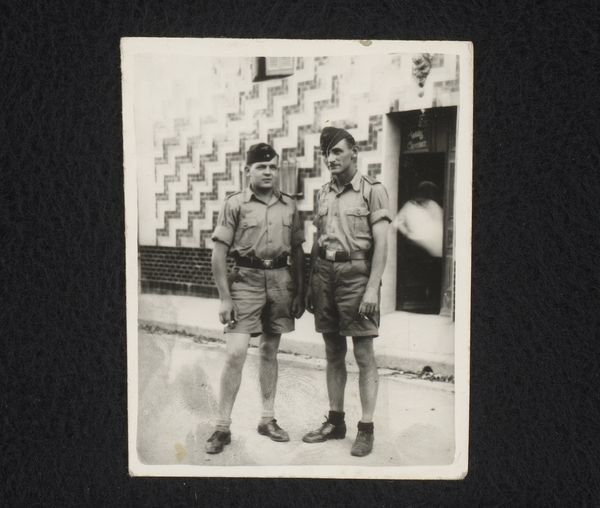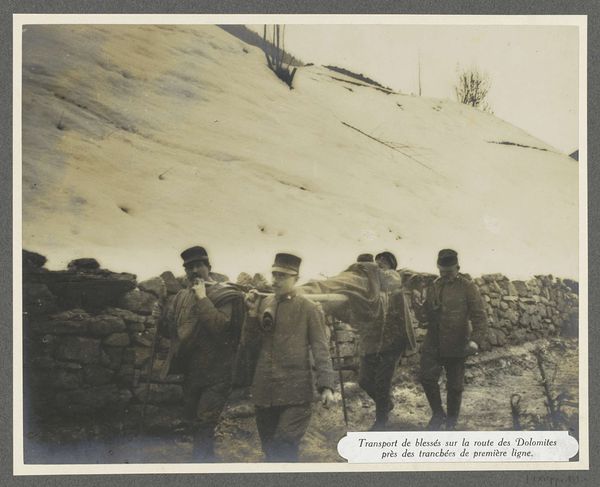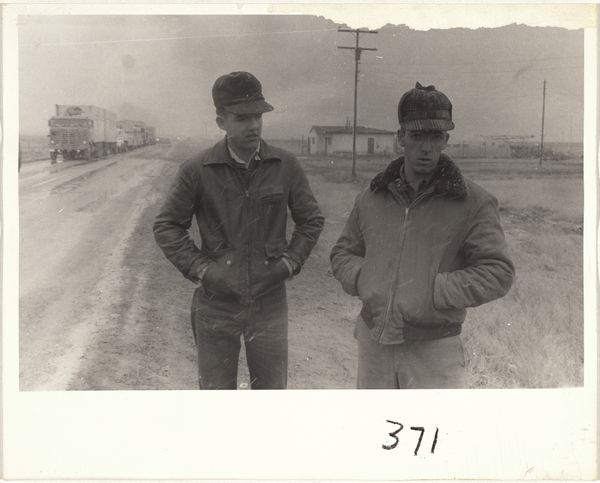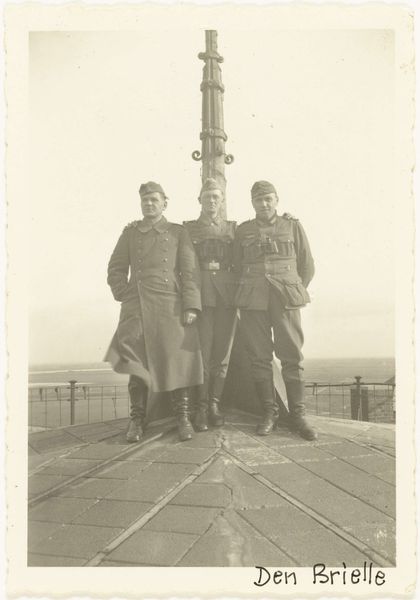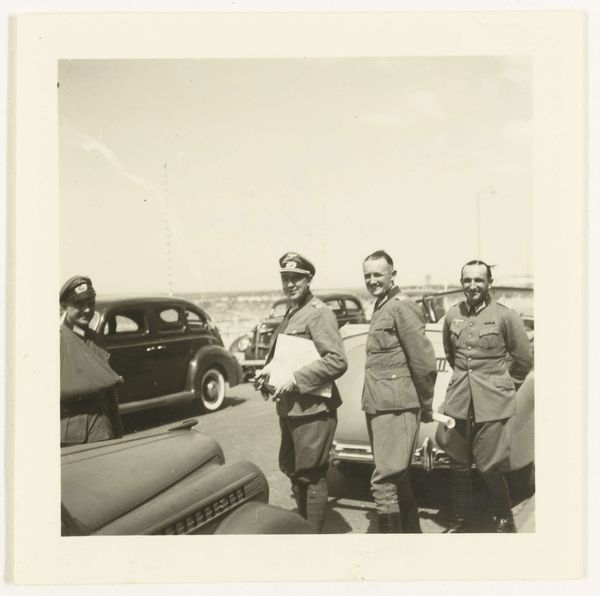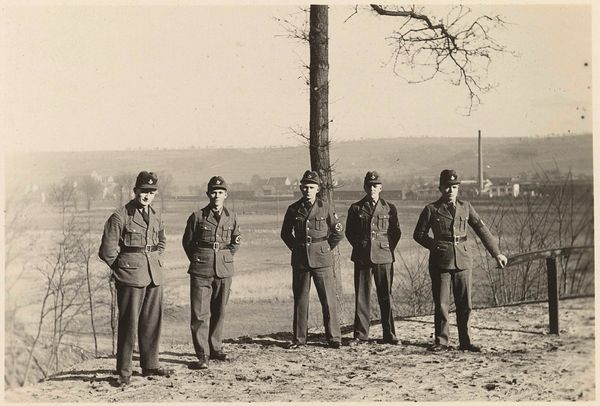
Dimensions: height 5 cm, width 5 cm
Copyright: Rijks Museum: Open Domain
Editor: So, this is "Twee Nederlandse militairen," a photograph taken in 1952 by David Ketel, currently housed in the Rijksmuseum. It's strikingly still, almost posed. The figures are stoic, yet something about the landscape feels almost…theatrical. How do you interpret this work? Curator: Indeed, there's a captivating stillness, isn't there? Notice how the vast landscape shrinks them, transforming these uniformed figures into almost archetypal sentinels. Consider the cultural memory encoded within the uniform itself. What does the military uniform represent, especially in the post-war era? Think about its psychological weight – power, order, but also constraint and loss. Editor: That makes me see it differently. Before, I just thought it was a simple portrait, but now I’m considering all that baggage of war. Curator: And what about the choice of landscape? The distant, rolling hills... does it evoke ideas of frontier, expansion, perhaps even a silent reminder of colonialism? The landscape is both background and a player, its emptiness amplifying the solitude of the soldiers. Are they guarding something, or waiting for something? Editor: Waiting, maybe. There's a certain...uncertainty...in their stances. Curator: Precisely. And look at the faint line of the horizon dividing earth and sky, isn't that an embodiment of the future and all its promises? What symbols do you notice? Do the helmets denote something in particular? The walking stick that appears casual may be laden with meaning too. It transforms the frame into a historical scene we ought to unpack. Editor: It's funny how such a seemingly simple photo can contain all that complexity. Thanks, I see it much more clearly now! Curator: My pleasure. Images speak volumes when we know how to listen. And by engaging with historical context, the individual pieces slowly build the bigger picture.
Comments
No comments
Be the first to comment and join the conversation on the ultimate creative platform.
